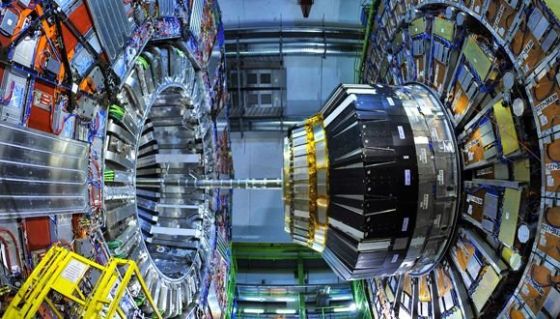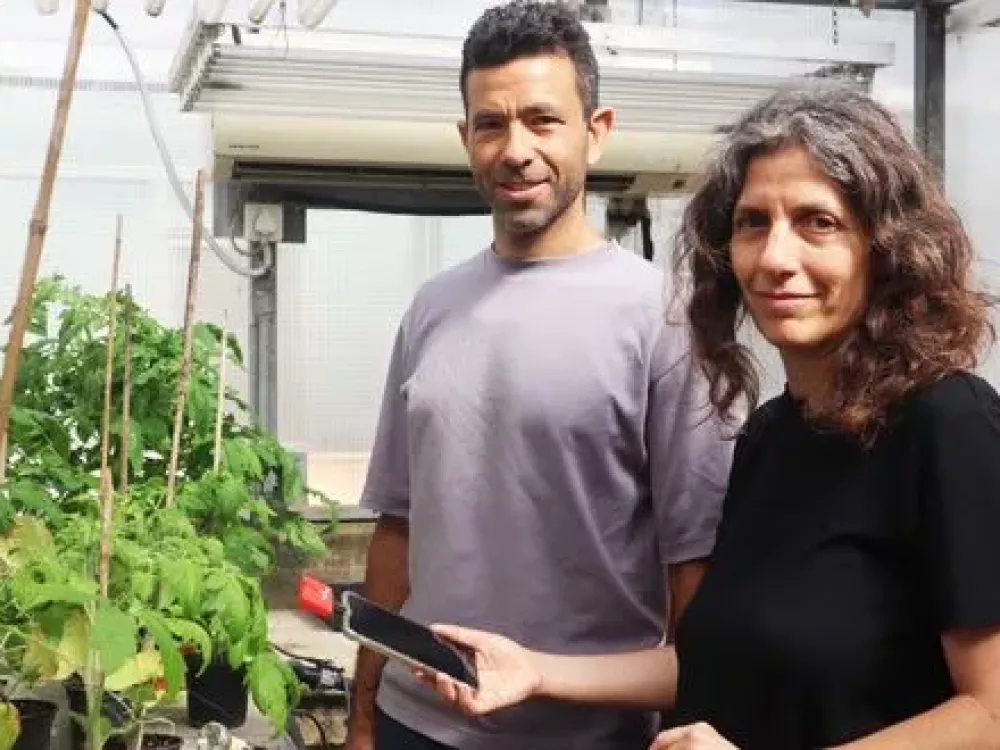
For the first time: The “God Particle” has been characterized in its decay into a pair of charm quarks
TAU researchers contribute further understanding of elusive elementary particle that gives mass to everything in the universe
Physicists worldwide have been captivated by the Higgs boson particle, also known as the “God Particle”. Its discovery a decade ago made waves in the physics community, and had researchers curious to learn more about its properties. TAU researchers have now succeeded, as part of a groundbreaking study, to describe a rare physical process through which the Higgs boson decays into a pair of rare elementary particles. The rate of this decay process can now be characterized more precisely and completely than before.
The new study was conducted as part of the ATLAS experiment at the Large Hadron Collider (LHC) at CERN (Geneva) by Prof. Erez Etzion and doctoral students Guy Koren, Hadar Cohen and David Reikher from the Raymond and Beverly Sackler School of Physics and Astronomy, Raymond and Beverly Sackler Faculty of Exact Sciences, at Tel Aviv University. It was a collaboration with the research team of Prof. Eilam Gross from the Weizmann Institute of Science and others.
Learning More About Forces in Nature
Over fifty years ago, physicists Prof. Peter Higgs and Prof. Francois Englert (who since 1984 has been a Sackler Fellow by special appointment in the TAU School of Physics and Astronomy) estimated that a new particle might exist whose field “provides the mass” to the elementary particles in our world.
In 2012, the end of a 30-year hunt for the Higgs boson was celebrated. Israeli researchers were senior partners in this discovery, and Prof. Halina Abramowicz, who was part of the TAU team, said “The discovery of the Higgs-like particle affirms the world view that the universe is made up of straightforward, symmetrical laws and that humans are the byproduct of disruptions in that symmetry.” Higgs and Englert won the Nobel Prize the following year.
The Challenge of Creating the Higgs boson
In the particle accelerator, pairs of protons are made to collide with each other at extremely high velocities. In such energetic collisions, various interesting processes can occur, from which, one can learn about the nature of our universe. The way in which these processes are investigated, is by means of a complex array of particle detectors placed around the points of collision, enabling reconstruction of the types of particles that are generated during the collision, as well as their features. A vast range of processes can occur during the collisions, and each has its own unique “signature” in the detector. In order to extract rare events and acquire new insights about the elementary particles and forces in nature, large amounts of statistical data must be collected (i.e. a very large number of collisions must be observed).
The Higgs boson is, as mentioned, a relatively heavy elementary particle, but can be created in collision between protons, as long as the accelerator’s energy is high enough. Immediately after its creation, it decays into lighter particles.
“It is interesting to investigate into which types of particles the Higgs decays, and with what frequency it decays into each type of particle,” says Guy Koren. “To help answer that question, our group is trying to measure the rate at which the Higgs boson decays into particles called ‘charm quarks’.” Quarks are a specific type of particles that share similar features. They compound, for instance, the protons and neutrons, which are in the nuclei of atoms. Koren continues to explain that measuring the decay of Higgs boson into ‘charm quarks’ is not a simple mission, for two reasons: 1. Only one out of billions of collisions [between protons] result in the creation of Higgs bosons. Furthermore, only three percent of the Higgs bosons that do emerge proceed to decay into charm quarks. 2. Five additional types of quarks exist, and they all leave similar signatures in the detectors. So, even when the process does take place, it is very hard to identify.
More Information About The Rate of Decay
Despite all the collisions that have been collected since 2012, the group from Tel Aviv has not yet identified enough decays of Higgs bosons into charm quarks to measure the rate of the process with the required statistical accuracy.
Nevertheless, sufficient data has been accumulated to state what the maximal rate of the process is with respect to the theoretical predictions. A rate of decay higher than the predicted rate would constitute a first important indicator for “new” physics or expansion of the currently accepted model – the standard model of elementary particles. From the current measurement, the researchers conclude (with a well-defined statistical certainty) that there is no chance that the rate of decay of the Higgs boson into charm quark is 8.5 (or more) times higher than the theoretical predictions, otherwise enough such decays would have been observed in order to measure it. “This is the first time that anyone has ever succeeded in saying something important about the rate of this specific decay based on a direct measurement of it, therefore it is a very important and significant statement in our field,” explains Koren
The research is not yet over, however. Higgs’ decays into quarks of smaller masses have yet to be observed. As a result, the researchers cannot be certain that the same ‘rules’ apply to quarks from those generations. “If it should appear that the Higgs boson decays at a rate that is not proportional to mass (squared) of the particles, there could be far-reaching implications for our understanding of the universe,” explains Prof. Etzion.
Featured image: Illustration: The European Organization for Nuclear Research (CERN)’s LHC accelerator, by which the Higgs boson was detected in 2012 in the ATLAS and CMS experiments
Related posts



New Findings About the Early Universe 50 Million Years After the Big Bang




First Satellite Observatory for Quantum Optical Communication in Israel


